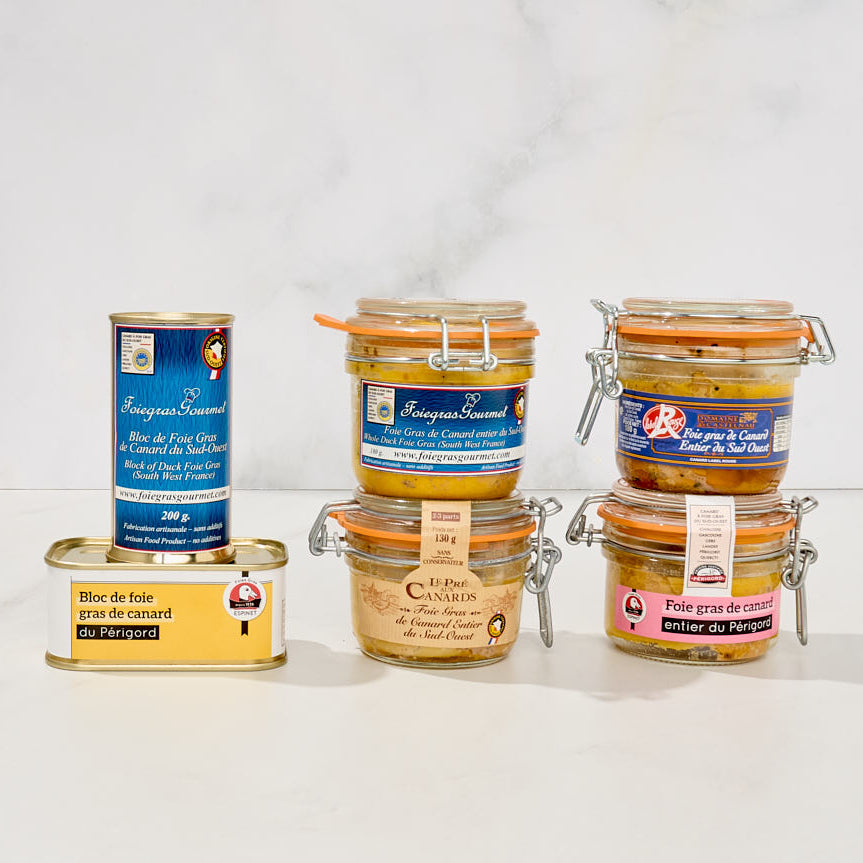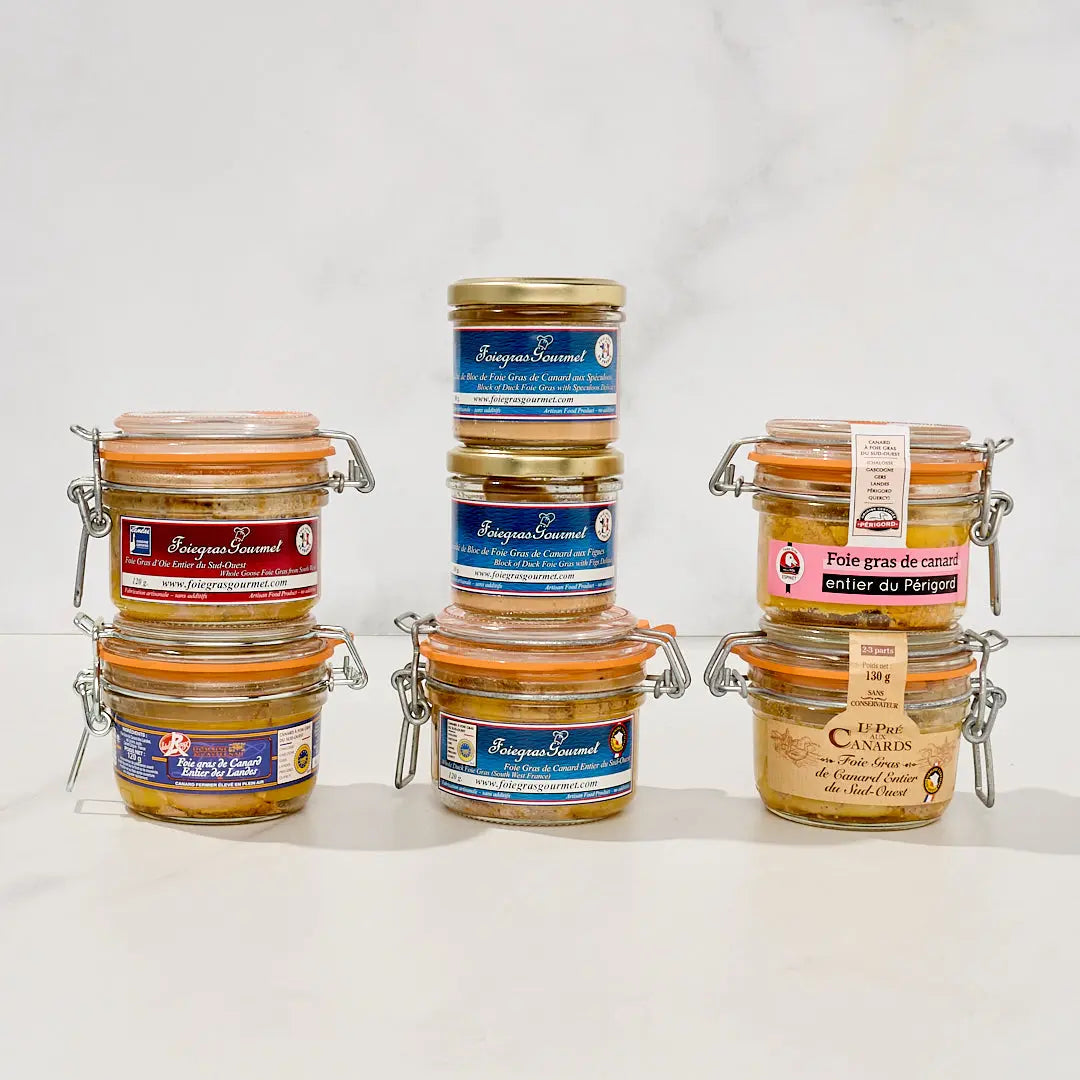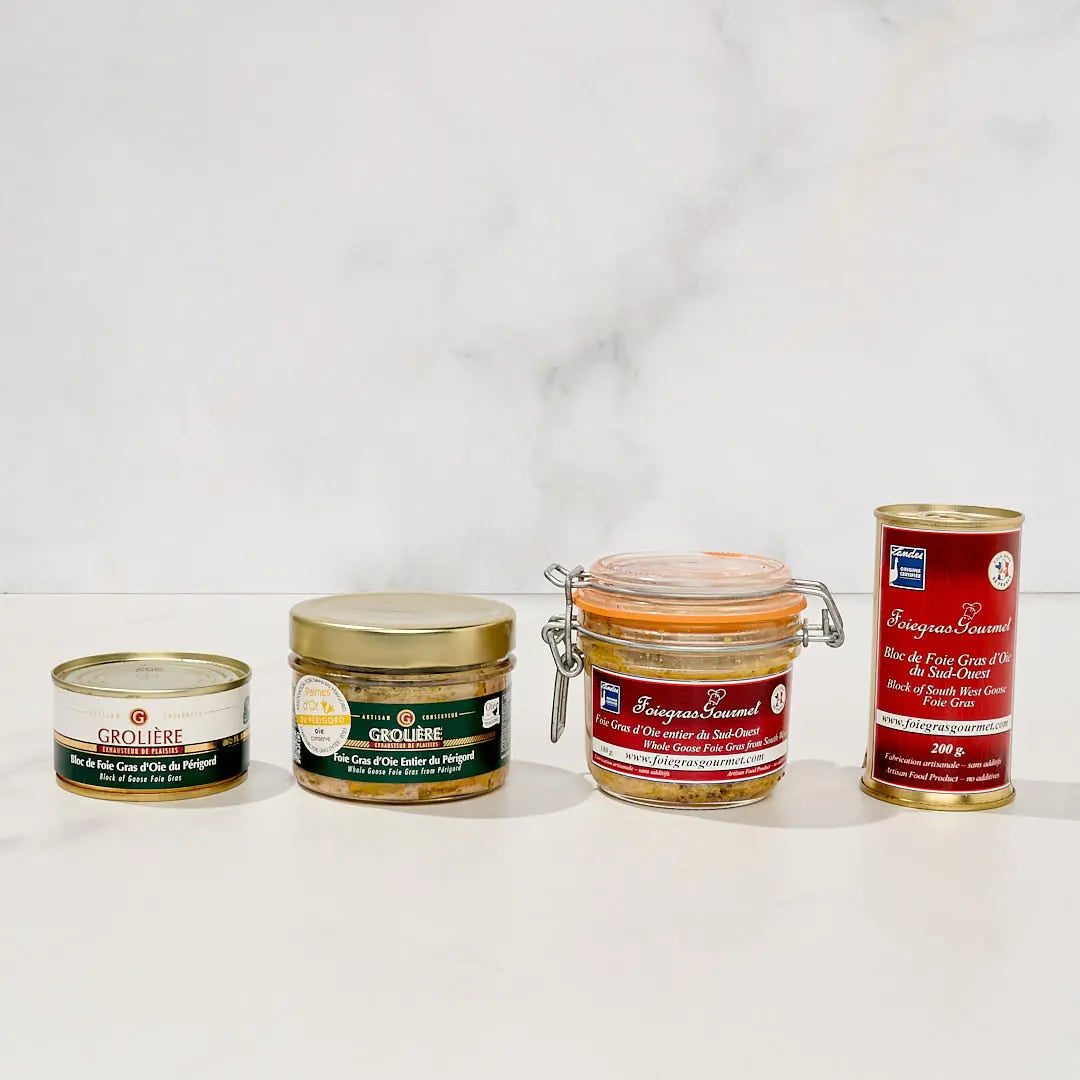Goose vs duck liver, What's the difference?
If you are thinking of surprising your guests or creating an innovative recipe and want to use French foie in your dishes, here you will find all the information you need to know how to differentiate goose liver and duck liver.
It should be noted that this is not the "Goose vs duck liver" battle, we can simply explain some details to keep in mind to help you choose what you like best.
Aesthetically speaking duck liver seems more appetising with its beautiful beige-orange colour. Uncooked, goose liver has a pretty pink colour but the colour becomes a little duller once cooked, with lightly grey tones.
Is it better to cook duck liver or goose liver?
In order to bear the name foie gras, the minimum weight of a duck liver is 300g, whereas the minimum weight of a goose liver is 400g. Nevertheless, on markets in the South-West, you may most often buy foies gras whose weight is somewhere between 450g and 650g for a duck liver and somewhere between 600g and 700g for a goose liver.
So the goose’s liver is bigger than the duck’s liver, but also is special in that it almost doesn’t melt when you cook it, unlike duck liver which will greatly reduce in size. It’s also for that reason that goose liver remains a great product.
Goose or duck liver: A matter of taste
It may seem complicated to choose between goose or duck liver because certain people don’t hesitate to say that goose liver is better, or vice-versa. In all fairness, it’s a question of taste, of habit and of “palace upbringing”.
Goose liver has a more subtle flavour, less distinct and has a tendency to be expressed in its after taste. If you mainly eat duck liver, goose foie will perhaps seem bland. If on the other hand, if you are used to eating the latter, you will take pleasure in being reunited with this delicate flavour.

While there are many differences between ducks and geese, there are also many similarities. Like swans and many other waterfowl, the wild ducks and geese from which the many domesticated breeds came belong to the Anatidae family of birds.
These animals, unlike chickens, enjoy aquatic environments from rivers and lakes to ponds on commons where the contents of their diet tends to include predominantly plants and insects.
Many of their body characteristics, such as their legs, thighs, feet, feathers, nostrils and long necks are similar although there are some significant differences, their flat bills being such a thing. Male birds are generally larger than the females of the species and while ducks lay smaller eggs, they lay in greater number compared with female geese.
In conclusion, the one who decides who wins the fight between goose vs duck liver is you since each person has their own tastes. Pink coloured, goose liver is a foie gras which has a delicate and refined taste and a subtle flavour. Its texture is smooth and smelting. Beige-orange coloured, duck liver gives a more distinct taste and a more pronounced flavour than goose liver. It also has a more rustic touch.
There is no defined criterion to say that goose liver is better than duck liver or vice versa. It depends on the tastes of each person and it also depends on what you are willing to pay, the best thing is to have fun buying our packages of different foie gras both whole and in blocks and choose your favorite between goose or duck liver.













Bonjour Claude, il y a des centaines de recettes originales avec du foie gras : essayez par exemple de nouveaux fruits comme des tranches de mangue, de poire ou de fruits rouges. Le foie gras avec différentes sortes de pain ou de pain d’épices est également une expérience intéressante. Et pourquoi pas une sauce à base de vinaigre balsamique.
On déguste principalement le foie gras en entrée, également en plat principal autour d’une belle salade ou sur un tournedos Rossini, mais savez-vous qu’il existe de nombreuses recettes en dessert ? (en crème brulée, en panna cotta…) ? Recherchez « recettes originales de foie gras » et vous trouverez de nouvelles idées !
Je voudrais changer la présentation de mon foie gras car je le sers toujours avec de la gelée au cognac, des tranches de figue, de pomme, du confit d’oignons, etc.
Que pourrais-je mettre ? J’ai déjà gouté avec de la marmelade de tomates, mais c’est difficile à trouver…
Hi Jean, goose foie gras comes from male or female geese, while duck foie gras usually comes from male ducks.
The name “Duck Foie Gras” is reserved for male ducks whose livers weigh at least 300 g. The name “Goose Foie Gras” is used regardless of whether livers are from male or female geese, yet weighing at least 400 g.
Regarding quality, it doesn’t have much incidence and gender is not specified on products.
Does it matter what gender the goose was in the taste and quality of the pate?
Ask questions on the topic of foie gras